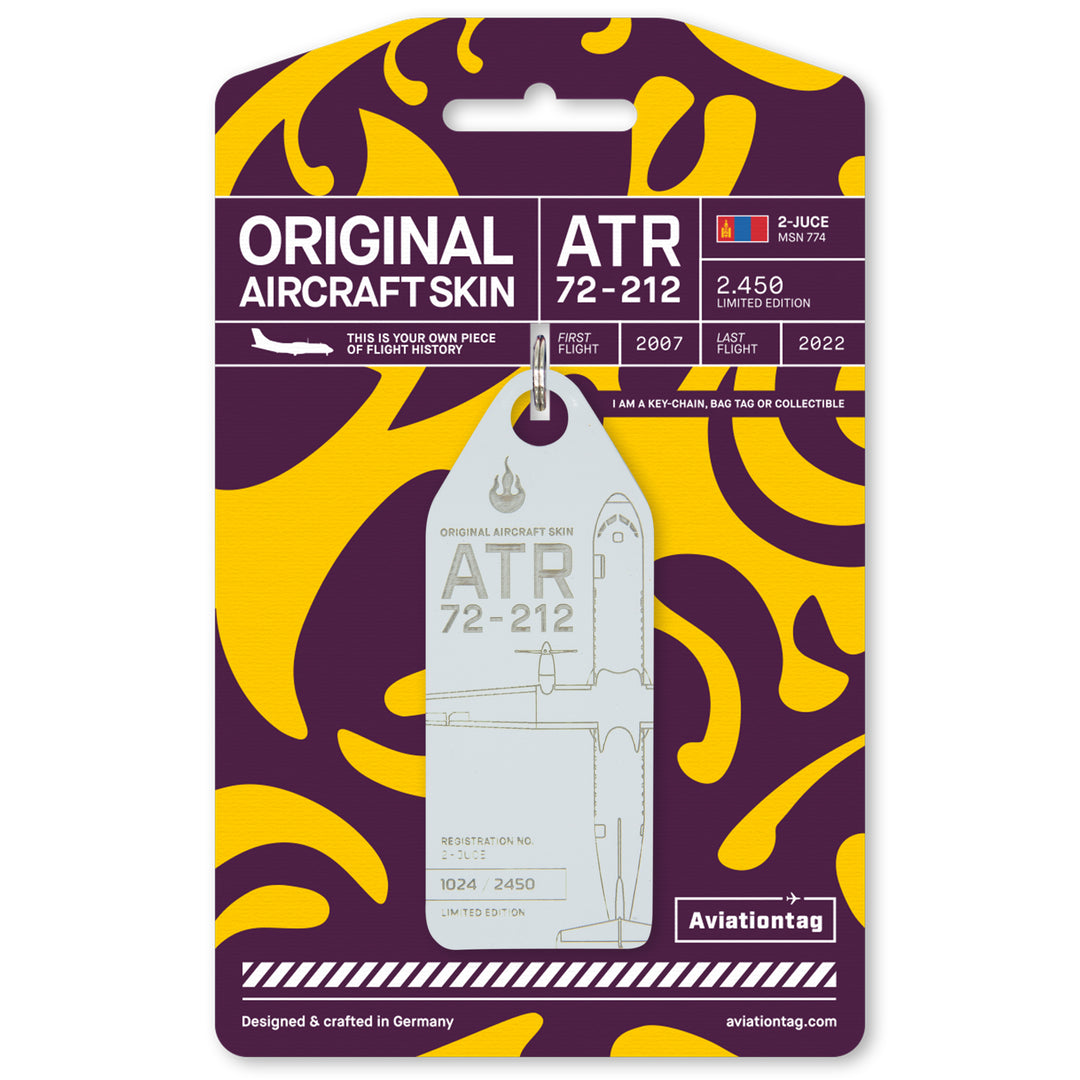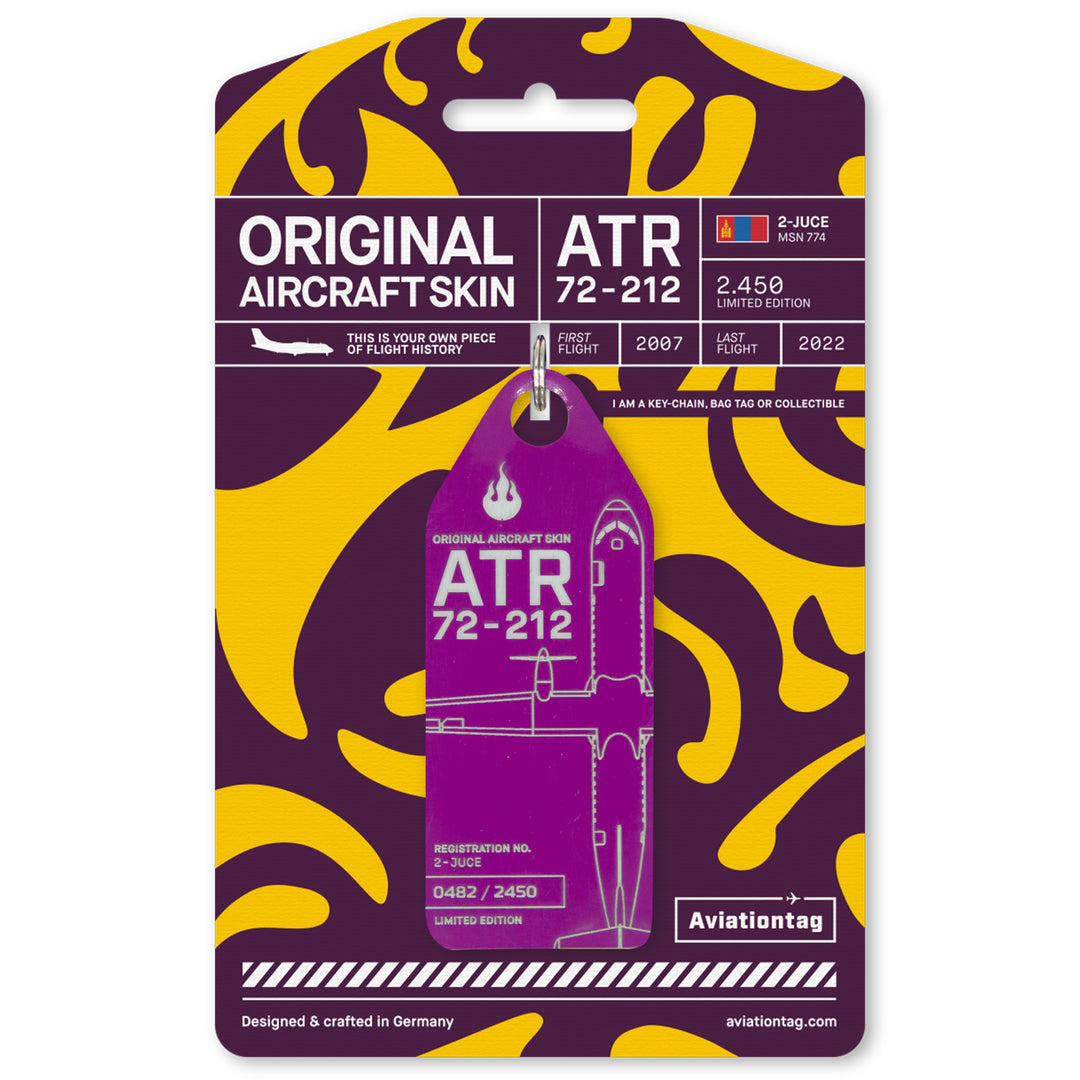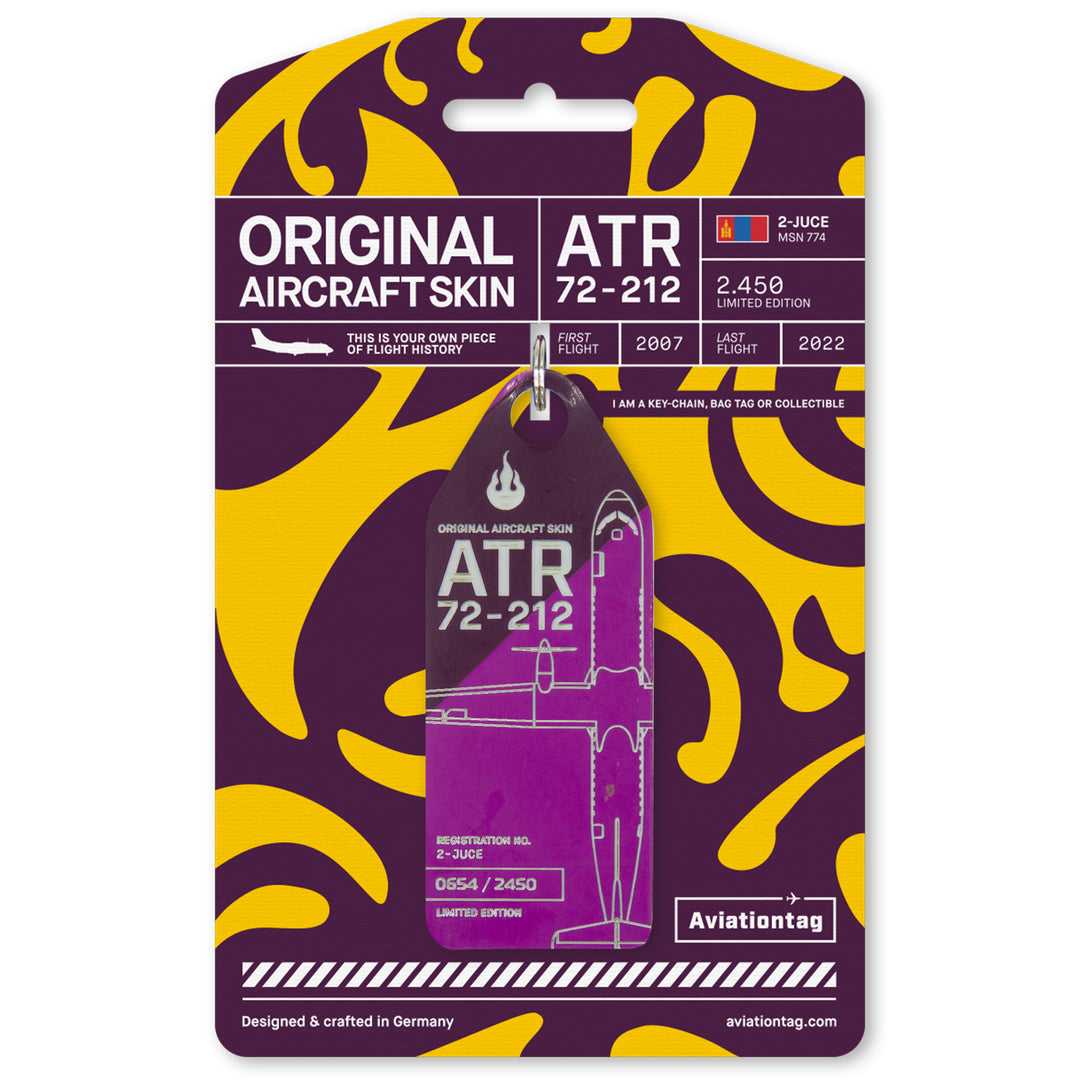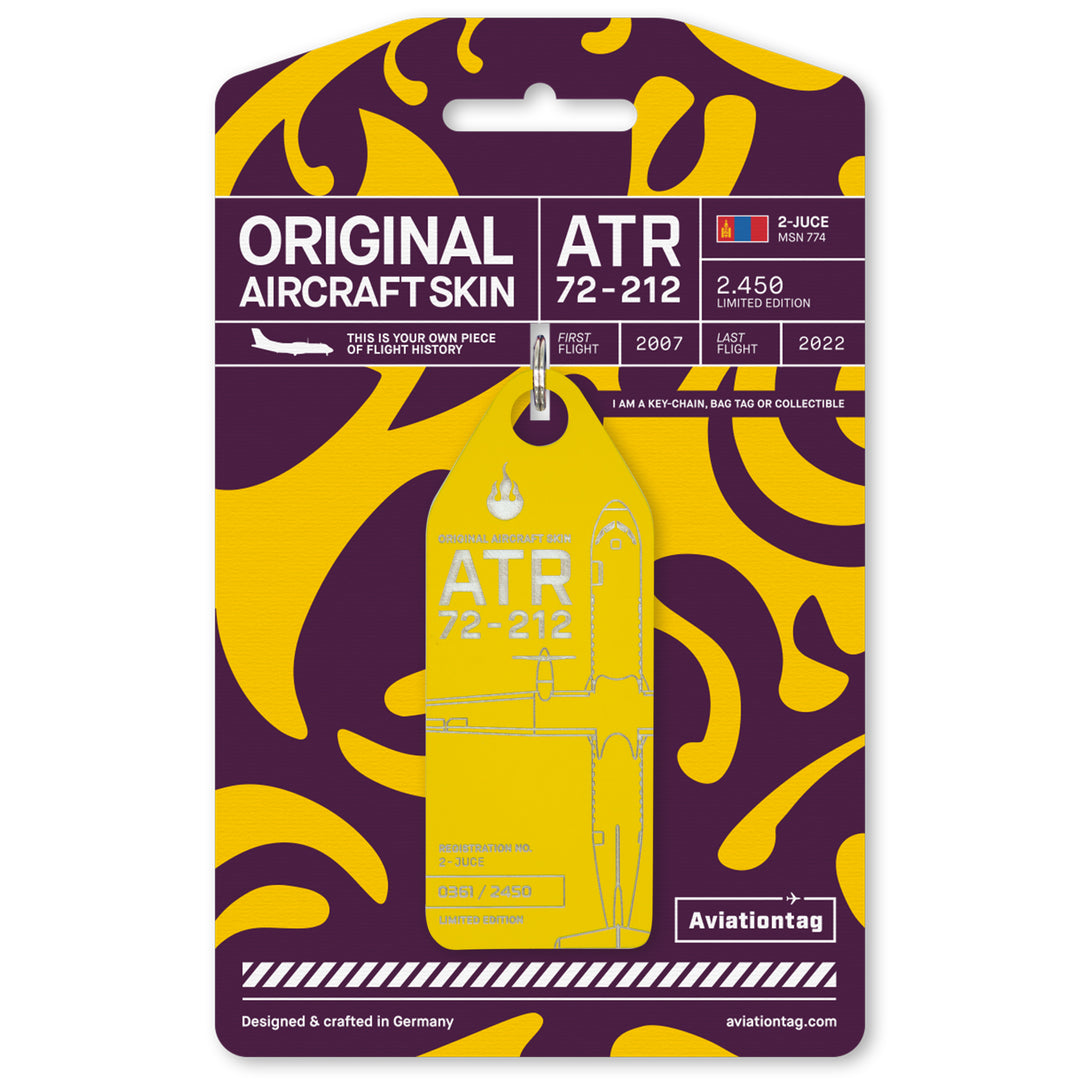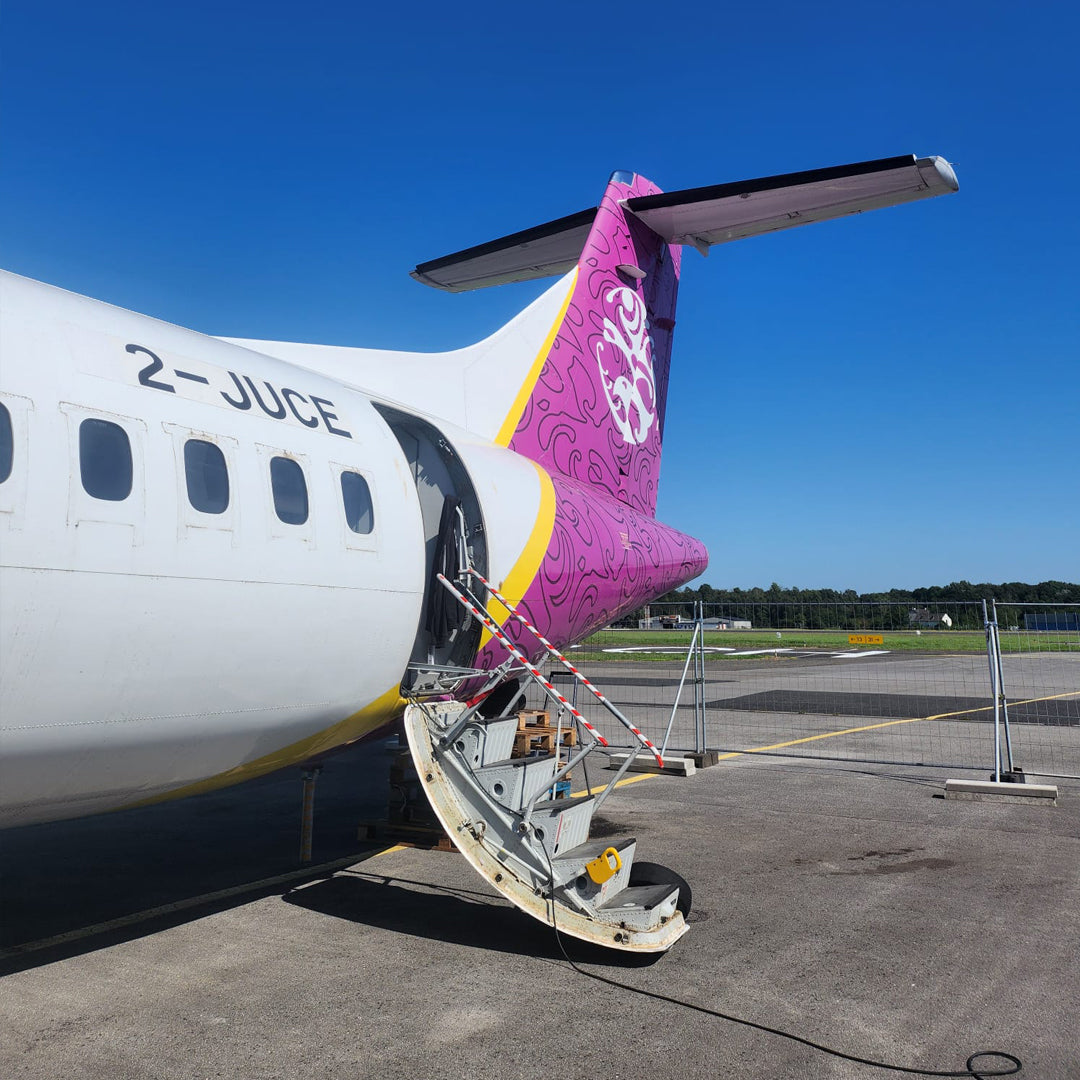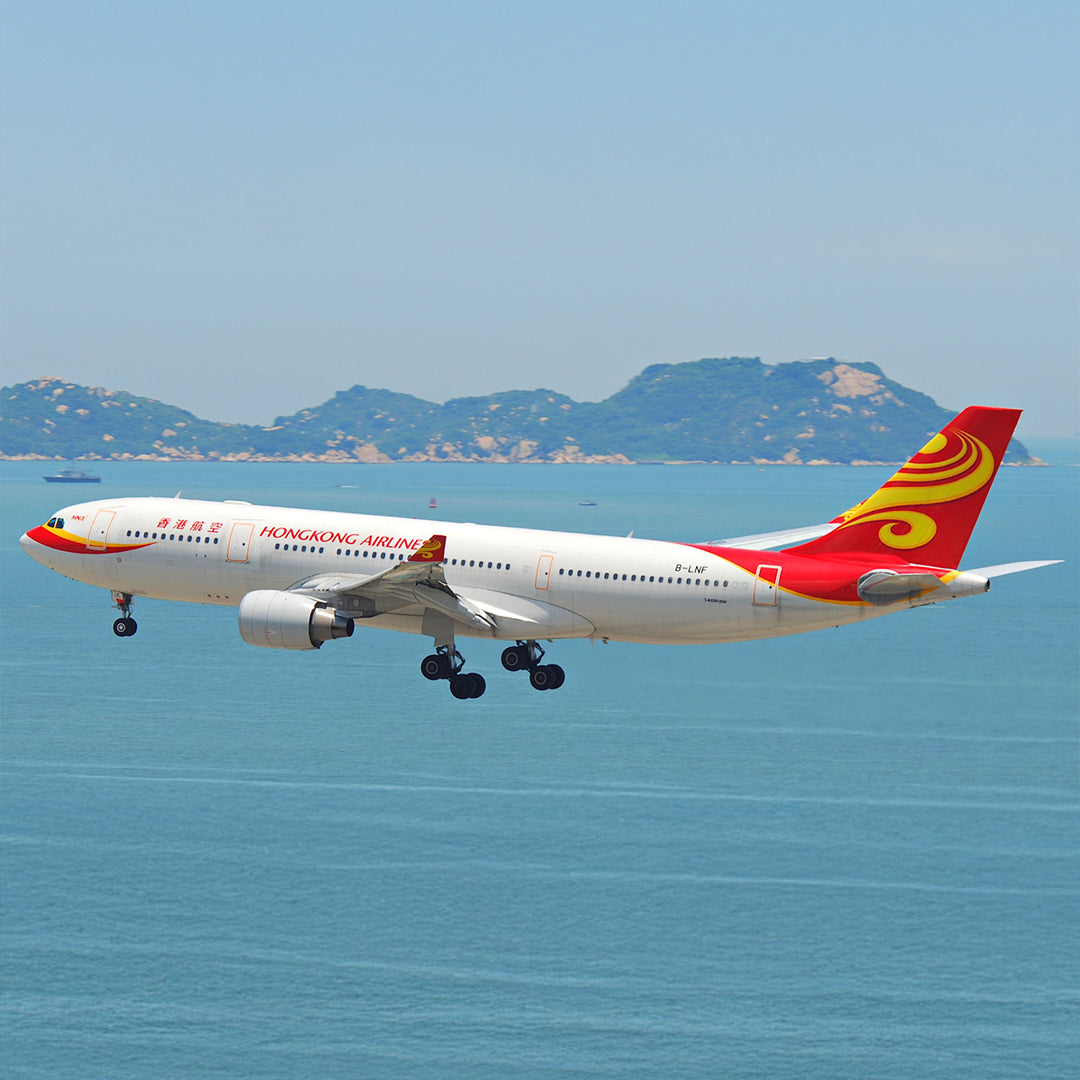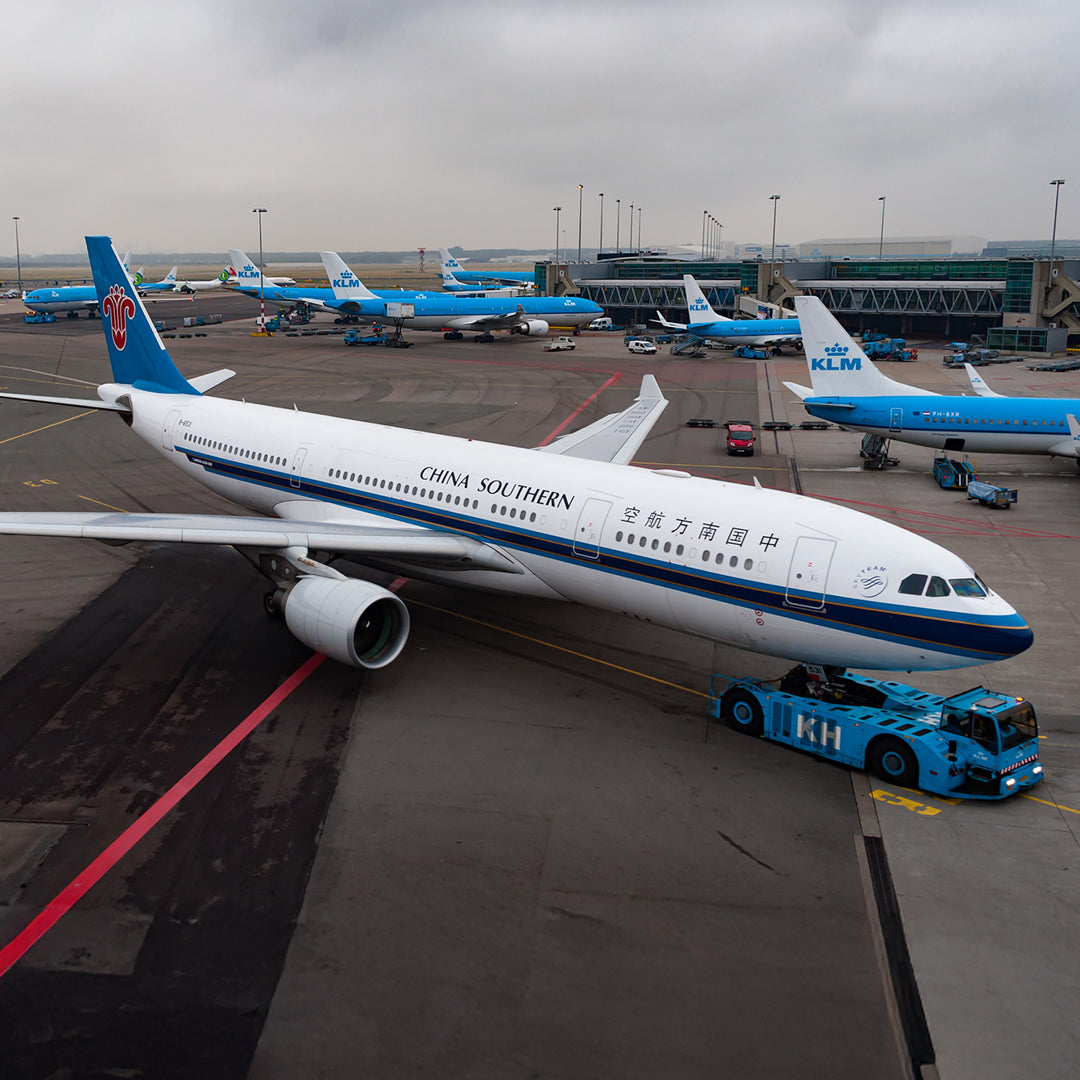A splash of Mongolia: Hunnu Air and the second life of ATR “2-JUCE”
There are liveries you notice from across the apron. Hunnu Air’s magenta-violet tail paired with bright white and yellow was one of them. For years it stood out against the tan and blue hues of the Mongolian steppe—a small carrier with big ideas. Our latest edition traces that story through a single airframe that wore those colors and later surfaced in Germany as 2-JUCE—a familiar aircraft in unfamiliar markings. The journey touches on start-up optimism, a bold rebrand, changing fleets, and the quiet logistics that bring airframes to their last stop.
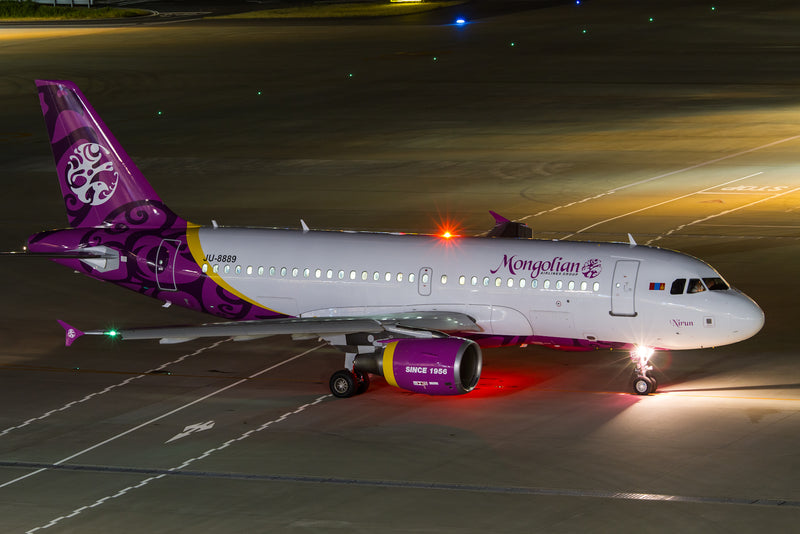
Hunnu Air began life in 2011 under another name: Mongolian Airlines Group. Within two years the brand faced a clear problem—confusion with the country’s flag carrier MIAT Mongolian Airlines—and opted for a decisive correction.
In April 2013 the airline reintroduced itself as Hunnu Air, borrowing the Mongolian spelling “Hunnu” of the ancient Xiongnu and adopting the slogan “Wings of Mongolia.” The rebrand signaled more than a new logo; it set the stage for a carrier that wanted to be both a domestic lifeline and a regional connector.
At the outset, Hunnu built around pragmatic turboprops—Fokker 50s—for Mongolia’s long distances, sparse population and demanding airfields. Early schedules linked Ulaanbaatar with provincial centers such as Bayankhongor, Mörön, Choibalsan, Khovd and Dalanzadgad, knitting together communities where road travel can be measured in days, not hours. These flights established the airline’s identity: essential, regular, and designed for the realities of a vast country.
But Hunnu also harbored bigger aspirations. The carrier leased Airbus A319s and tested regional and long-haul waters, advertising seasonal services that reached Tokyo, Bangkok, Shanghai, Hong Kong, and even a direct Ulaanbaatar–Paris operation in 2014. For a privately backed Mongolian airline, the move was bold—proof that a long-haul operation could be built from a non-hub market. The dream ended that same year when the A319s were repossessed amid financial pressure, but it left a trace of ambition that would resurface later.
If the A319 foray captured imaginations, turboprops paid the bills. In a landscape of high winds, winter extremes and remote towns, right-sized aircraft with short-field performance define what is possible. Turboprops framed Hunnu’s proposition: dependable links between the capital and far-flung provinces.
The airline’s schedule—domestic first, regional second—made it a utility as much as a brand, serving locals, government travel and tourism that shifts with the seasons.
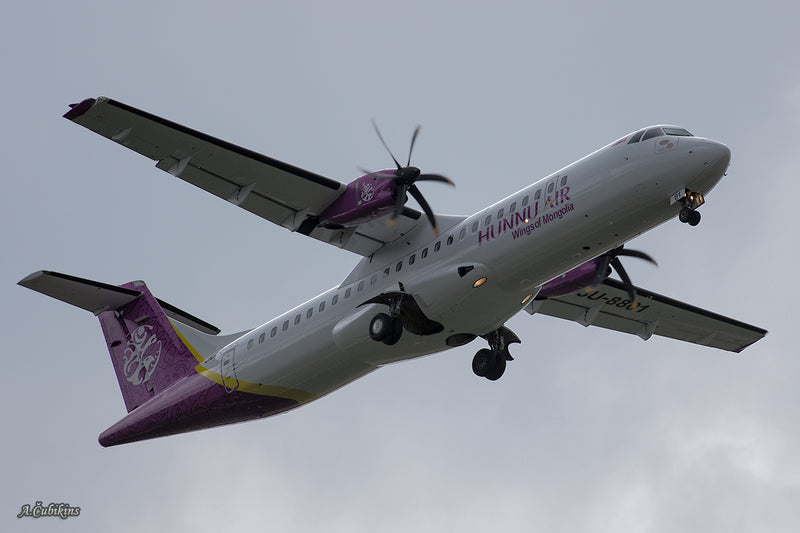
More than ten years after the rebrand, Hunnu Air operates a compact but diverse fleet. As of 2025, public sources list Embraer 190s, an E195-E2, plus Cessna 208B Grand Caravans and future Cessna 408 SkyCouriers—a mix designed for flexibility across passenger, cargo and remote-access flying. The network continues to connect Ulaanbaatar with cities such as Khovd, Ulaangom, Uliastai, Choibalsan, Dalanzadgad and Mörön, plus occasional cross-border routes to northern China. It’s a practical strategy: international when viable, domestic at its core.
That evolution also reflects steady ownership backing. Hunnu is associated with Mongolyn Alt (MAK) LLC, a major Mongolian industrial group—crucial support in a market where infrastructure and geography demand patience and long-term vision.
Before the Embraers, ATR 72s were the airline’s backbone. Their economy and short-field performance matched Mongolia’s rugged geography, and for several years they carried Hunnu’s distinct livery into places jets could not reach. Among them was manufacturer’s serial number 774, the aircraft at the heart of this story.
Behind the scenes
Hunnu Air ATR 72
Don’t miss the Making-Of video on YouTube – with real footage from inside the aircraft and its transformation into Aviationtags.
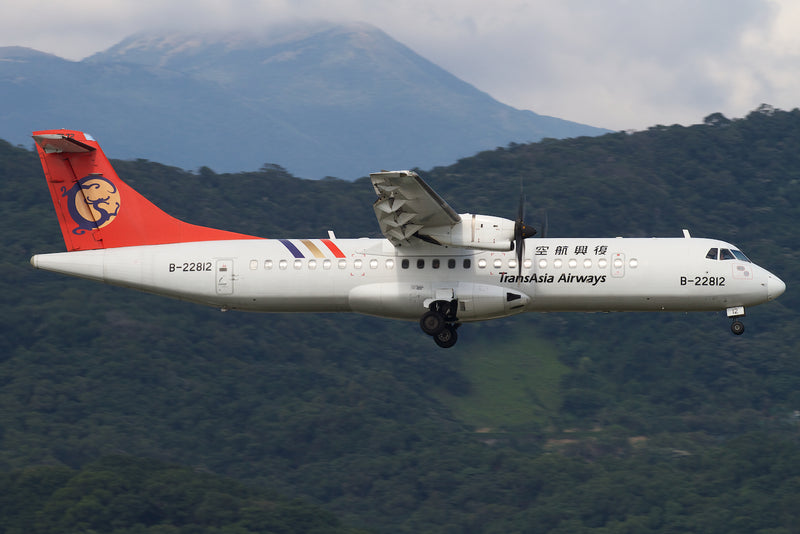
If aircraft kept passports, this one would be full. MSN 774 first flew in December 2007 and entered service in Taiwan with TransAsia Airways as B-22812. It later passed through Nordic Aviation Capital as OY-YBK and joined Hunnu Air in 2016 as JU-8801. After several years of Mongolian service it moved onto Guernsey’s 2-REG as 2-JUCE—an administrative shift more than a repaint, but enough to make spotters look twice when it appeared in Germany.
The aircraft’s last stop was Mönchengladbach (MGL/EDLN). For followers of regional aviation, the airport is synonymous with ATR maintenance. Rheinland Air Service (RAS) has decades of experience with the type, performing base and line work, modifications and support. ATRs regularly pass through for technical checks or storage; the site is about expertise, not dismantling.
In our case, the aircraft’s final steps—storage and the recovery of fuselage sections for upcycling—took place at MGL. The material then entered our finishing process in Germany, where it was carefully cleaned, trimmed and prepared to preserve the original paint and character. What began as a regional airliner now continues as part of aviation heritage in a form designed to last.
We hadn’t planned another ATR this year. Then we saw it in Mönchengladbach and changed our minds. There was something about this aircraft—the balance of color, its service story, its place in Mongolia’s skies—that made it too good to pass up.
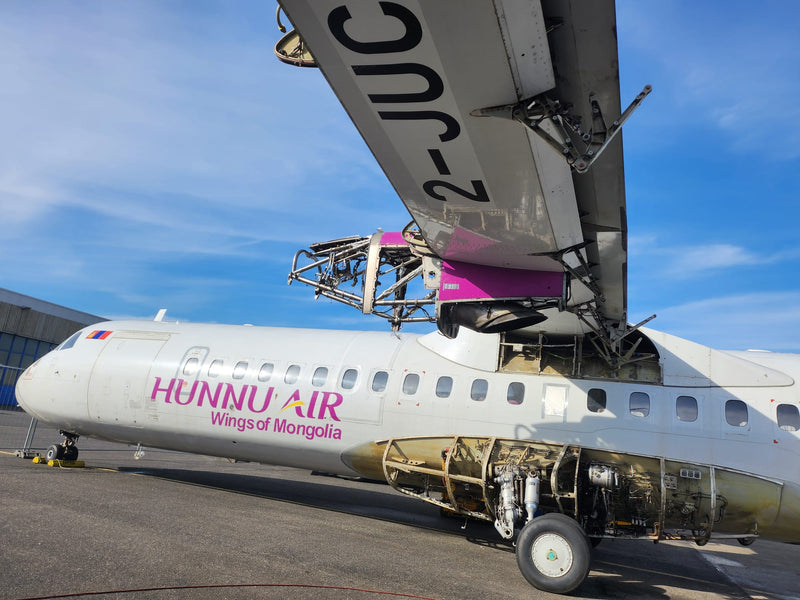
We’d love to hear from you: what matters more to you—bold, colorful designs like this Mongolian ATR, or a familiar airline you recognize instantly?
Tell us in the comments!
Among everyone who joins the conversation, we’ll give away one original ATR Aviationtag from our collection — good luck and have fun discussing!



